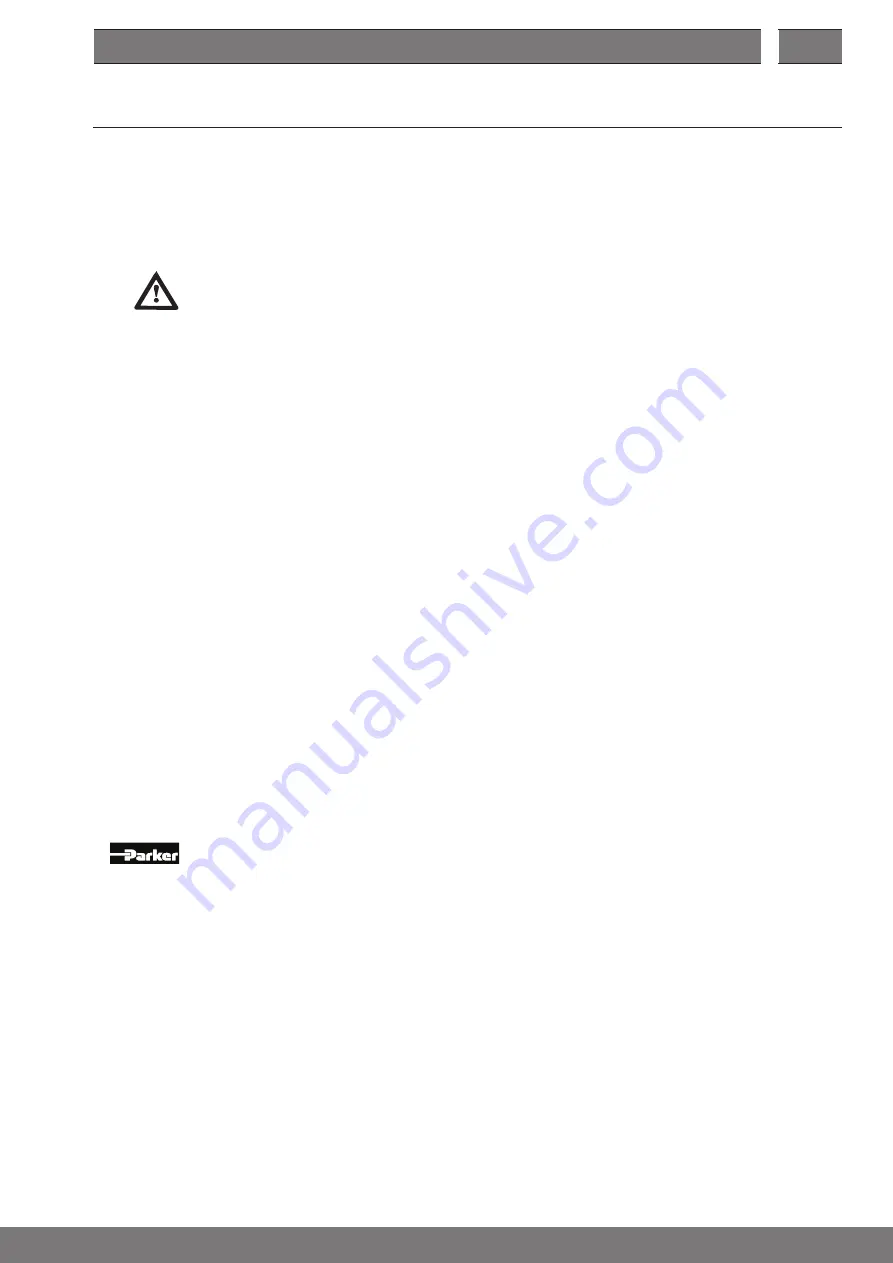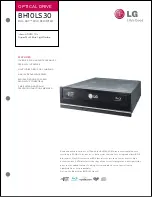
9
EN
7
Installation in machine or plant
Installation work and commissioning must be carried through by trained personnel!
7.1 Preparations
Prior to installation:
• Remove and dispose off all transport devices.
The assembly itself must be carried out in such a way that
• the applicable rules and regulations are observed as required (e.g. DIN EN 983),
• the OSP-L is installed without distortion or warping,
• all connections and operating parts are accessible,
• the type plate is legible on the cylinder.
Any potential hazards that may exist between Parker Origa products and customer’s items of equipment
must be eliminated by the user as required.
7.2 Installation of OSP-L
Notes on the Application of the OSP-L
Mechanical
•
Prevent the inner sealing band from being pressed or sucked in.
Damage to the inner sealing band reduces the operating reliability.
A sudden jerk movement of the pressureless piston can create a low pressure which sucks the inner
sealing band into the cylinder chamber.
•
In the case of extreme contamination we recommend to install the „piston-down“ installation and, if
necessary, the use of deflectors.
•
Fasten the working load to the carrier using only the threaded holes in the carrier.
•
Position the working load so that the bending moments on the carrier are below the values shown in the
OSP-L cataloque.
•
For long cylinders, use mid-section supports from our cataloque.
•
Avoid forces exerted by loads carried on external linear guides.
Example
OSP-L: by using a carrier with clevis mounting from our cataloque.
Electrical
• Sensors enable your load to be positioned accurately.
• Fit the sensors so that they are not close to ferritic parts or moving loads.
• Use the most favourable mounting slot on the circumference of the cylinder profile.
Pneumatic
• Actuate the cylinder via two 3/2 way valves ore one 5/3 way valve, normaly open.
• Avoid uncontrolled movements during start-up or after an unwanted stop
• Use soft start units, pressurised units or similar items from our catalogue.
• Arrange the control system so that the piston does not travel into a completely exhausted cylinder chamber.
• Adjust the piston speed with throttle non-return valves, these can be screwed directly into the cylinder.
• Use compressed air connections of adequate size.










































